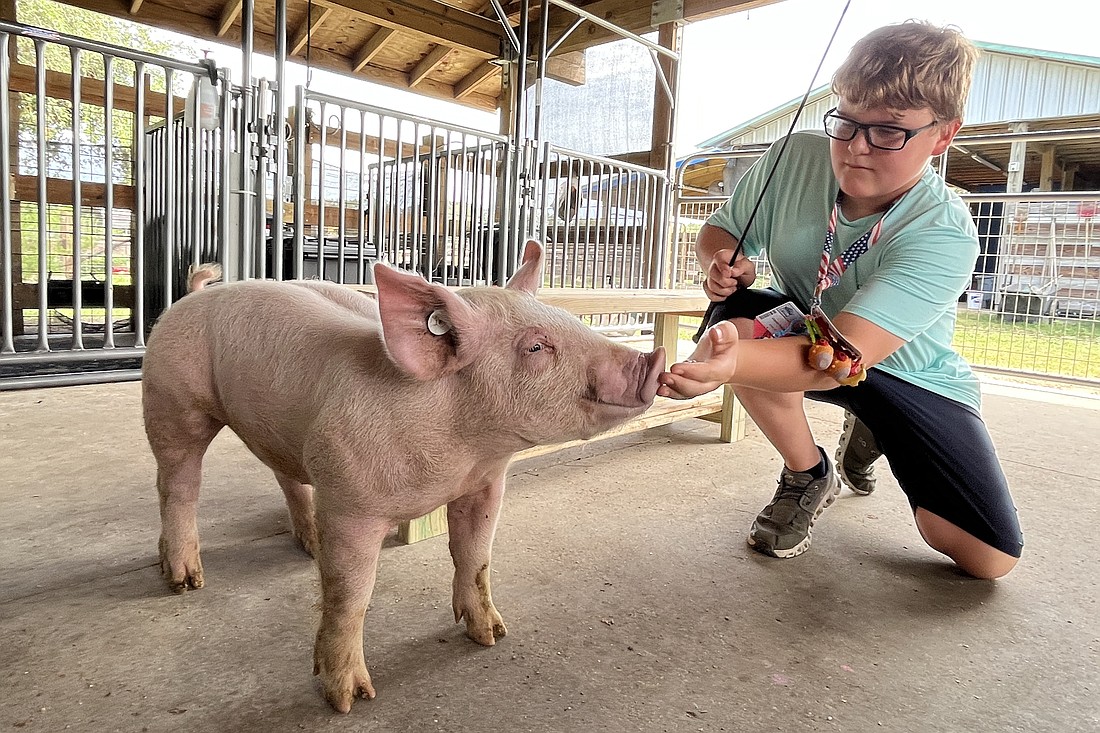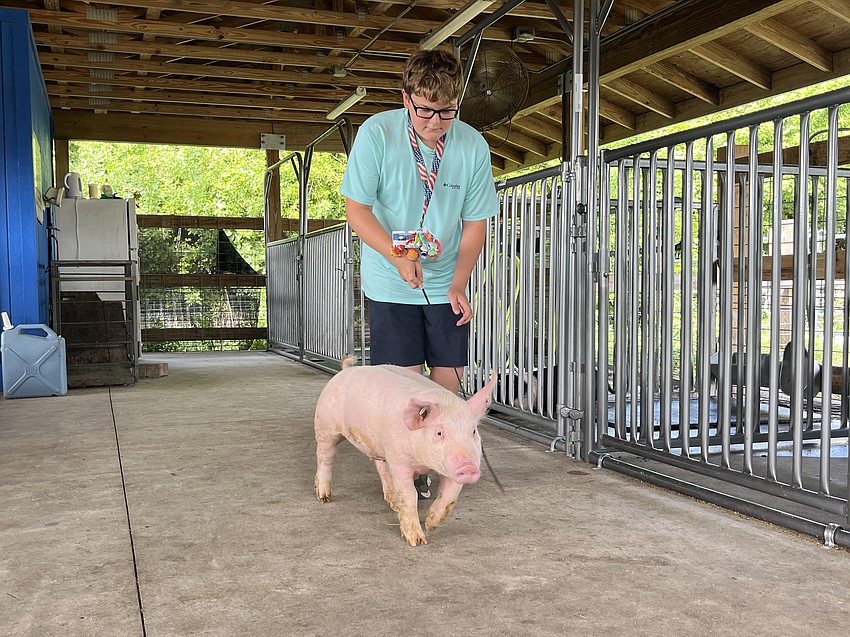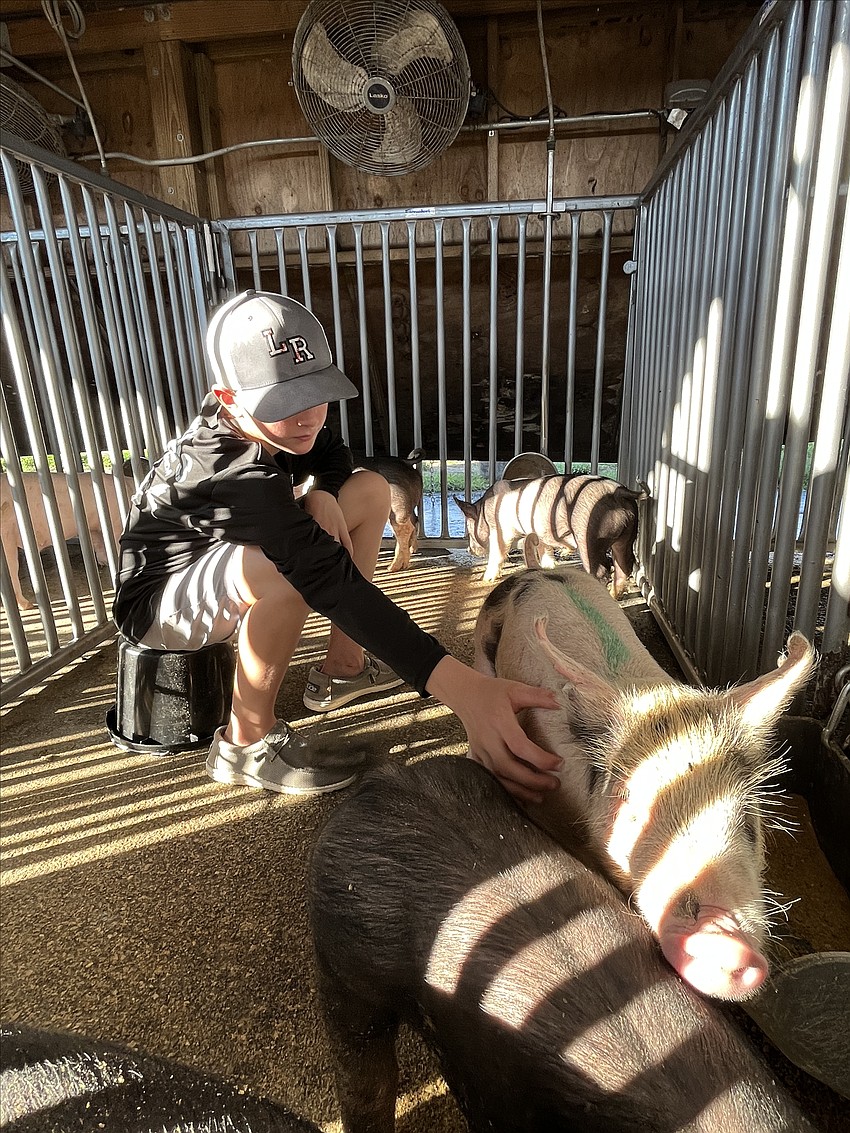- July 26, 2024
-
-
Loading

Loading

When the average person looks at a pig, they’re most likely thinking the bigger the better.
A fat pig could mean more profits.
But students like Clayton Reagan, who is an eighth grader at Carlos E. Haile Middle School, look for so much more.
FFA and 4-H students are careful when selecting their pigs to show at the Manatee County Fair.
There are several factors students take into consideration when choosing the pig they’ll spend the next three months preparing for the fair in January.
When Reagan was at a CK2 Showpigs auction in August, he was looking at his options.
With six years of showing pigs under his belt, he can see a pig’s potential for success at the fair, whether that means the pig will be sold at auction for a high price or he can win ribbons.
Reagan paid attention to the way the pigs walked. A pig’s walk can be telling.
Students will look at pigs walking as if they were models on a runway.
Reagan said he looks for whether the pig has a balanced walk, meaning the pig doesn’t favor one side when walking.

“When they’re walking (balanced), they’ll stay on their toes,” Reagan said.
Jessica Jones, the agriculture teacher and FFA advisor at Haile, said students should look to see if pigs’ shuffle is in a figure-eight form.
“With the shuffle, if a pig is doing something weird, it just makes them look different than the others,” Reagan said.
Not only is it the walk, but students are looking at the structure of the pigs. A pig with a good bone structure and big muscles are going to catch people’s attention.
Caroline Bradley, a seventh grader at R. Dan Nolan Middle School, chose her pig this year because it didn’t have an arched back and its legs looked capable of carrying a large amount of weight.
“There’s a little bit of pressure (in picking a pig) because you’re looking for a pig that will do well and can walk well,” she said. “It’s pretty difficult because the pigs are little and some of them just got off a trailer (from another state).”

Much like any competition, sometimes the results depend on a judge’s preference.
Jones has found over the years that judges don’t like red pigs. They prefer pigs that are white or black and white.
Money can be a factor as well. Schools have partnerships with breeders to provide pigs at a lower cost, but students also can find a pig on their own whether they use a specific breeder or purchase a pig through an auction. Students have purchased pigs from around Florida as well as other states.
Carolyn Gilbert, the agriculture teacher and FFA advisor at R. Dan Nolan Middle School, worked with a breeder in Indiana to provide pigs for her students. Interested students could pay $350 to have one of the pigs.
After the pigs were brought to Nolan Middle, students were able to select their pig in the order that students submitted payment.
A pig that costs $180 might not be as high of a quality pig as one that costs $500. You get what you pay for, Jones and Gilbert said.
Spending big bucks on a pig doesn’t guarantee a blue ribbon or a large return on the investment at the auction.
“My kid spent quite a bit of money her senior year two years ago, and her pig died two weeks after check in,” Gilbert said. “It’s agriculture. Nothing’s guaranteed.”
Once a student picks a pig, they have to put in the time to properly raise the pig, ensuring it’s healthy and gaining an appropriate amount of weight. They have to break their pigs, meaning they train their pigs to walk into the ring with confidence and their pigs are comfortable walking with their heads up. They have to train the pigs to respond to them without guidance or the touch of a whip.

Students need to consider the type of feed and supplements they’re giving their pigs. The quality of feed and supplements can help a pig to become more muscular or drop its belly.
For example, Reagan said pigs can be given marshmallows, or other sweet treats, to make the pig fatter.
“Back fat is a big thing,” Reagan said. “If you don’t have enough back fat, you can’t make it into the fair.”
Getting their pigs into the ring at the fair and showcasing what they’ve been able to do with their pig after only four months is an accomplishment, Reagan said.
Although students like to win ribbons and make a profit at the auction, there is one thing more valuable that comes from showing a pig at the fair — The learning experience.
“It’s the memories, the responsibility, the dedication, the commitment and the love for livestock and the swine industry,” Gilbert said. “We want them to be able to produce an animal that somebody is proud to eat.”